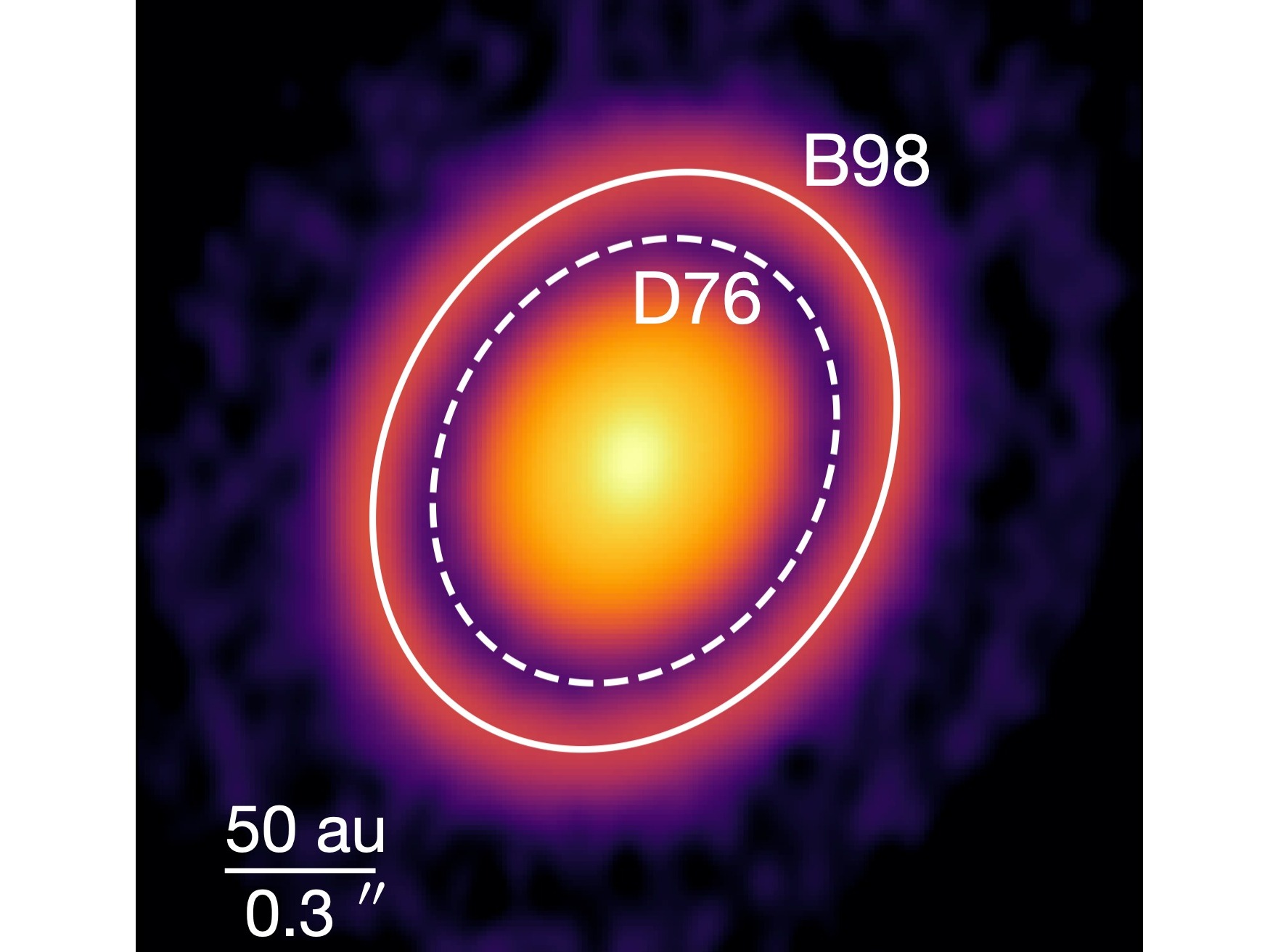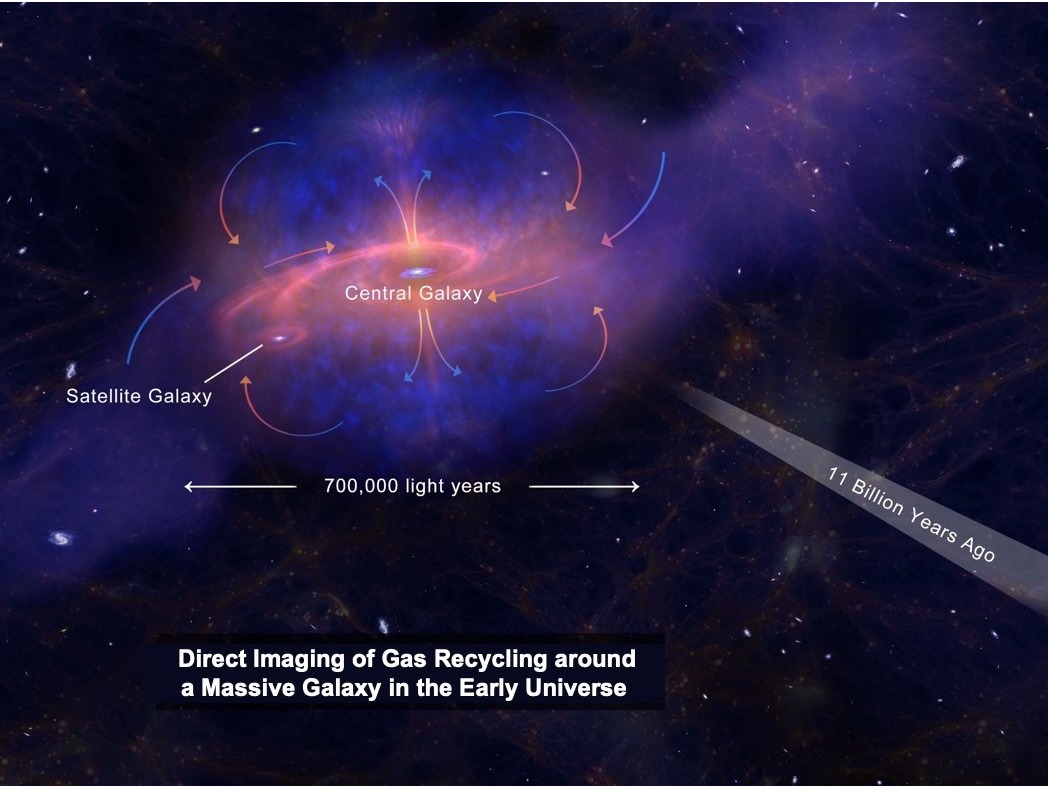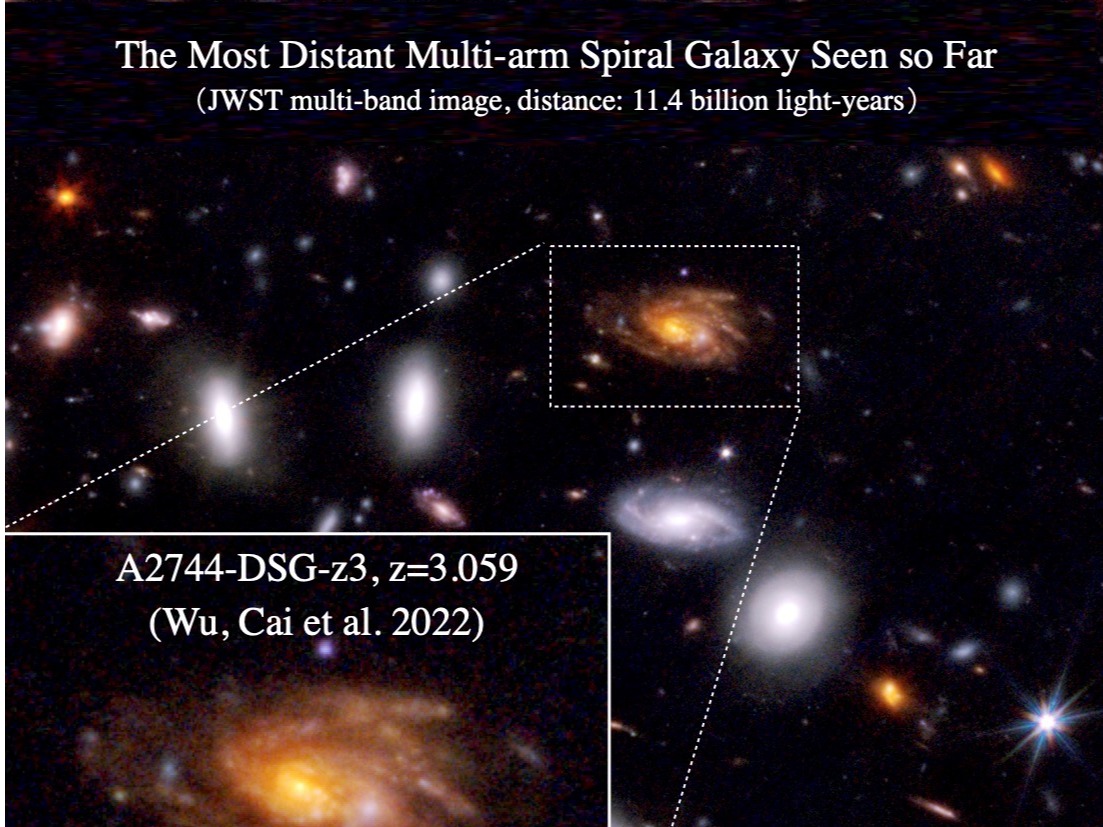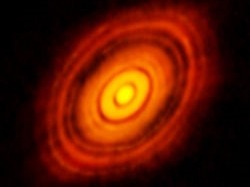
-

2023.08.28
Accreting Planets Leave Chemical Footprints in Protoplanetary Disks
Protoplanetary disks serve as the cradles of planet formation, often revealing captivating features such as bright rings and dark gaps in both dust continuum and gas emission maps. These features have traditionally been attributed planets, which shape the disk by gap-opening and altering its rotation profiles, effects that can potentially be observed.A new study led by Tsinghua Department of As...
More -

2023.05.05
Direct Imaging of Gas Recycling around a Massive Galaxy 11 Billion Years Ago
Galaxies are the birthplace of most stars and black holes. However, scientists are still debating, how galaxies accrete the fuel to sustain their growth and how they in turn pollute their environment with elements heavier than helium. An international team led by Prof. Zheng Cai at Tsinghua University has now directly observed the neighborhood of a massive galaxy in the early Universe. They fin...
More -

2023.01.03
The earliest multi-arm spiral galaxy confirmed
JWST multi-band-imaging observations of A2744-DSG-z3, the most distant spiral galaxy that has been seen so far. Image credit: Cai, Wu, Sun, Tsinghua University and The University of Arizona.Spiral-like structures are widely regarded to be caused by gravitational instability, while different spirals are formed in different ways. When and how these spirals form is still a mystery. Fortunately, re...
More -

2022.12.12
Chickens or eggs? ALMA rings as planet factories
Protoplanetary disks, the cradle of planets, contain a large amount of building blocks for planet formation -- (sub)millimeter-size solid particles -- pebbles. Yet, how, when, and where planets start to form is an outstanding question. In the past decade, through the Atacama Large Millimeter/submillimeter Array (ALMA) in Chile, it was revealed that a large number of protoplanetary disks are rin...
More -

2022.07.05
Amateur and professional astronomers team up to identify rare binary star systems
An illustration showing a binary star circled by a warped circumbinary disk. Once every orbit, one of the stars in the binary passes behind the disk and its light is blocked from our view. Image credit: Poon, Zhu, Zanazzi, University of Toronto; Sahl Rowther et al., Warwick University.An international team led by Tsinghua astronomer Prof. Wei Zhu has identified only the second and third example...
More



